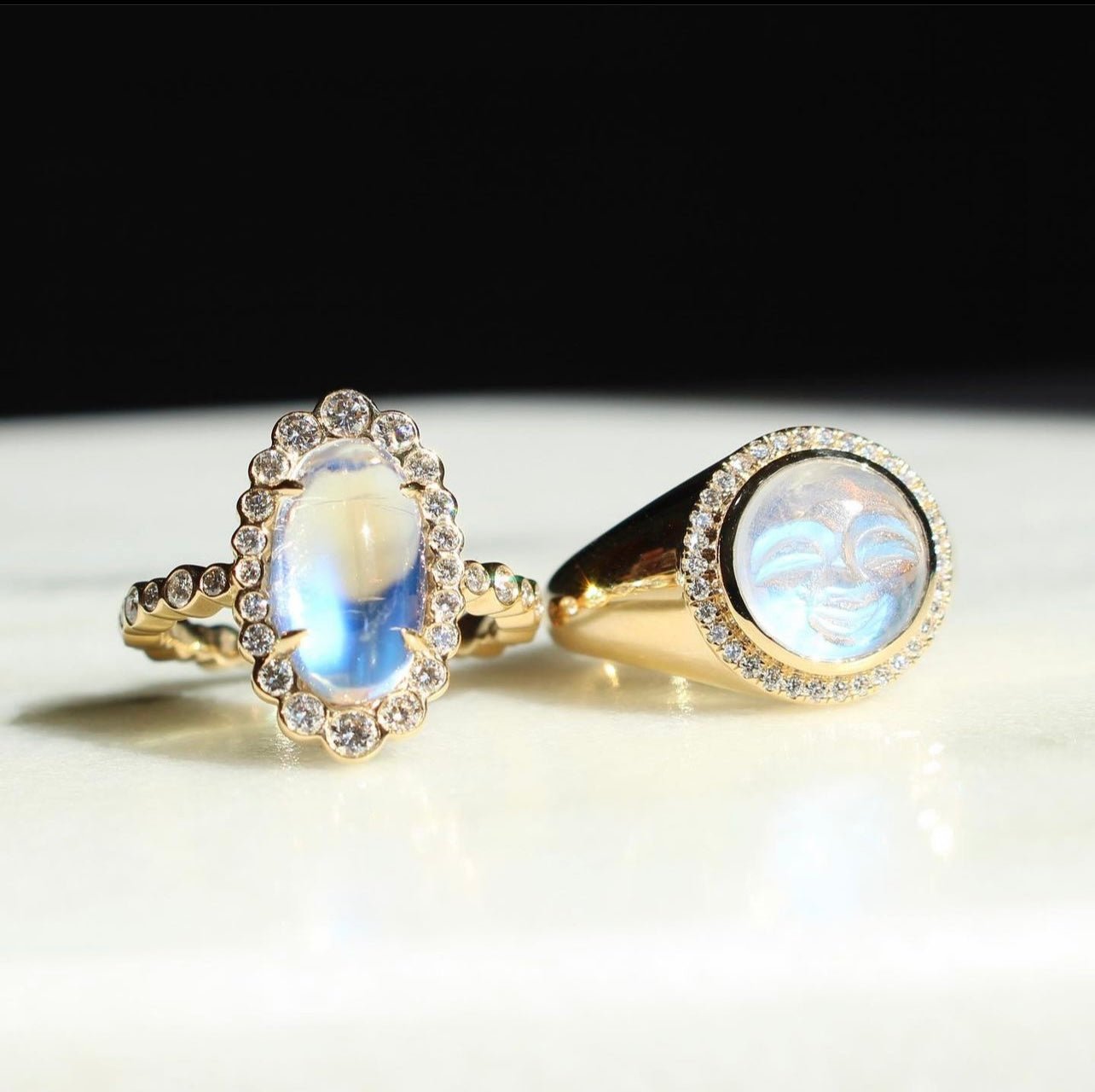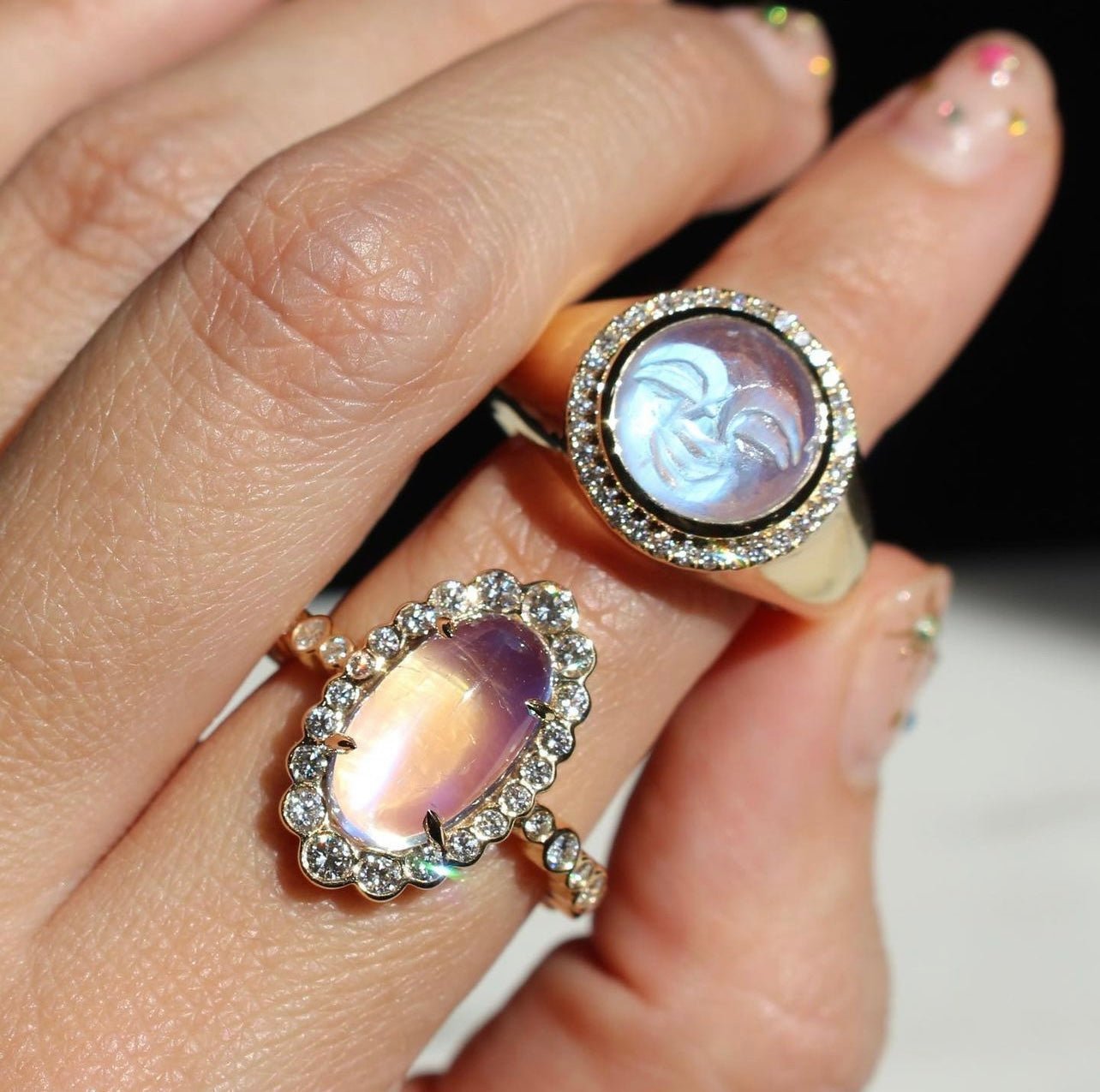There are a plethora of blue gemstones in circulation throughout the wonderful world of jewelry making (and buying). Chances are you’ve probably held onto a stunning turquoise or aquamarine piece and marveled at its blue shimmer. Maybe the waves crashing on a beach or the deep blue sky come to mind. While we love these December and March birthstones, today we’re here to talk about the Paraiba tourmaline.
This gemstone, which never strays far from its coveted blue-green sparkle, is top of the community. It outshines its peers and keeps the attention of gemologists on its location of origin, Brazil. Alongside our beloved alexandrite, Paraiba tourmaline has made this region famous. Paraiba tourmaline has incredible quality and adds instant flair to any wardrobe.
If you’re interested in getting to know this gemstone a bit better, let’s delve into its universe. Paraiba tourmaline has a recent history, but one that is just as rich as other stones. This is what makes the gemstone worth every penny, and earns it a rightful place in your collection.
Fine Gemstones vs. Costume Pieces: What’s the Difference?
What is the difference between costume jewelry and fine jewelry?
Costume jewelry can be fun and stylish but is generally made from low-quality materials and imitation metal and gemstones.
For collections that retain financial value, collectors will usually opt for pieces that can withstand the test of time and changing trends. That is why we emphasize the importance of purchasing gemstones that are not only unique but top-notch in value.
Original Tourmaline
Tourmaline, the parent variety of paraiba tourmaline, is also a fine gemstone. Compared to Paraiba tourmaline, Tourmaline isn’t quite as rare or as popular.
However, it’s great for people who love variety. Tourmaline comes in many different colors and shades, unlike the primarily blue Paraiba. Red and green tourmalines are known for their likeness to rubies and emeralds.
Tourmaline comes from pegmatite and is composed of chrome, vanadium, manganese, and iron depending on its hue. It is between a 7 and 7.5 on the Mohs scale of hardness, which gives it a moderate durability. It may still scratch, but it is less likely to break when worn as a ring or bracelet.
Is Paraiba Tourmaline Rarer Than Tourmaline?
The definition of Paraiba tourmaline has been widened to include more stones than those it encompassed at first discovery. Yet it is still hailed as an exotic gemstone, one that is not found in massive quantities and is treated as such with care and attention.
Diamonds, for example, are less rare than Paraiba tourmalines — shoppers are far more likely to find diamonds than Paraiba tourmalines at their local jewelry store.
Mark Henry’s relationship with Paraiba tourmaline mining sources and access to these precious stones help to set us apart. From Alexandrite to turquoise to Paraiba tourmaline, we create highly-wearable pieces from the rarest stones in the world.
Location and Discovery
The Paraiba tourmaline was discovered by Heitor Dimas Barbosa. As a local miner, he knew that the hills of Paraiba, Brazil were rich in gemstones. However, he had no idea that he was about to stumble upon an entirely new variety of tourmaline.
This original supply is rare — no more exists in these mines again.Since the 1980s, similar Paraiba tourmalines have been found in Mozambique and Nigeria. Stones in Mozambique sometimes appear in more purple shades, but those in Nigeria are the closest replications of Brazilian Paraiba found to date.
Which Stones Are Considered To Be Paraiba Tourmaline?
Since the original supply of Brazilian Paraiba tourmaline was so scarce and not likely to be rejuvenated, these international findings made big gemstone news.
In an effort to keep the stone in circulation, the International Gemstone Industry Laboratory Conference broadened the definition of Paraiba tourmaline. It no longer refers to strikingly blue gems from Brazil only but any tourmalines that have copper elbaite.
Chemical and Physical Composition
What is copper elbaite? Well, it is the property needed to form the blue hues of Paraiba that are so much more saturated than regular tourmaline.
Copper is the key to Paraiba, and its interactions with certain levels of manganese can make way for more warm-toned, violet-tinged pieces. The Paraiba tourmalines are found in granite pegmatites, hence the elbaite title.
Color
Paraiba tourmalines are prized for their blue or blue-green colors. Saturation matters to collectors and gem graders. It is very rare for a gemstone to have a vivid saturation, and on a scale from 4-6, chrome Paraiba only ranks at a 5. This is still quite impressive.
Properties
Paraiba tourmaline is also between a 7 and 7.5 on the Mohs scale of hardness, just like regular tourmaline. It has a conchoidal fracture but no cleavage. Its specific gravity is between 2.84 and 3.10.
Often, it is treated by filling its fractures, and sometimes lasering is also involved. It is sensitive to heat, but heat treatments may be performed if a warm-toned stone needs to be turned bluer.
Paraiba tourmaline does have inclusions, but usually, these can be mended by the lasers. Treatments may be avoided because the more natural the stone is, the more it will sell for. If inclusions are not too obvious and the gem is “eye-clean,” the treatments aren't necessary.
How To Determine the Value of Paraiba Tourmalines
All gemstones follow similar grading scales to diamonds, meaning they have the same metrics as the 4Cs. However, they add in their additional properties that determine their worth and overall quality: saturation and tone. This is not unlike fancy colored diamonds.
Color, clarity, cut, and carat weight are important when it comes to Paraiba tourmalines. Color is the most critical factor because it is what separates a precious tourmaline from a Paraiba. Without the blue hue, the tourmaline is not considered a part of the coveted sub-category.
We discussed clarity with the removal of some inclusions, but cut is equally as essential. A properly cut Paraiba will reveal all of the correct brilliance of its color. Without being faceted, raw Paraiba is not yet gem-grade. For instance, window Paraiba tourmalines will lose their shine.
Gem Grade Reports
Most fine gemstones and quality jewelry come with certifications. In this certification, you should be able to find a gem grade report. At Mark Henry Jewelry all of our pieces are graded independently by the Gemological Institute of America. This is one of the most prestigious laboratories; it’s quality you can count on.
If a stone doesn’t have a grade report, we highly suggest you either reconsider the retailer or pay for one to be done. It may tack on to your budget, but it is worth it to ensure you are getting what you pay for.
Lab-Created Paraiba
Speaking of getting what you pay for, we find it best to warn against imitation and lab-created paraiba tourmaline. Any gemstone that is as rare and luxurious as Paraiba is bound to have synthetic imitations. While lab-created gemstones are not necessarily fake, they are not worth the same amount as the natural material.
You can usually tell a lab-made gemstone apart from its mined counterparts because it will appear flawless to the naked eye. It won’t have any inclusions because it wasn’t created by real rock deposits and crystals. This should be your first warning sign. Additionally, lab-made Paraiba won’t have roots in a mine and won’t come with the adequate certification that it is from a reputable Paraiba source.
Paraiba Tourmaline: Price by Carat
Carat weight does matter, not as much with quality, but with the price. The bigger a gemstone is, the likelier it is to noticeably rise in price. 5 grams, or 25 carats, is usually the cutoff for natural Paraiba since it forms in fragments and not large pieces. Most Paraiba are cut down to less than one carat, which makes them slightly more affordable.
When the stone was first found, each carat was worth about $20,000. Now it is roughly $2,000 to $5,000 a carat. This is mostly due to the multiple Paraiba sources nowadays. It is worth mentioning that the stones in circulation on the market today are (probably) not authentic Brazilian Paraiba, and that is why they are worth less.
If you’re looking for Brazilian Paraiba, you’ve come to the right place! At Mark Henry Jewelry, we have a supply of the original precious stone. With our carefully sourced, designed, and crafted Paraiba tourmaline collections, you can have your own piece of gemology history.
Tourmaline vs. Paraiba: Final Thoughts
While both regular tourmaline and Paraiba each have their own values and benefits, we think it is fairly obvious that Paraiba takes the crown. With its show-stopping saturation and place as a modern gem miracle, Paraiba is well worth the investment. It’s impossible to resist its clear beauty!
Sources:
Paraiba Tourmaline | Gem Society
Paraiba Tourmaline | International Colored Gemstone Association

